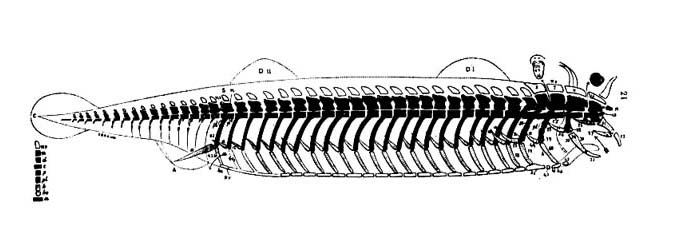The concept of homology, or morphological correspondence, was the central tenet of philosophical anatomy. It was used to define structural similarity. Homologies, which are now defined in terms of evolution, were formerly interpreted in a transcendental sense. Whereas homologous parts are now considered to have descended from a common ancestor, in the pre-Darwinian era they were usually looked upon as evidence of an ideal pattern imposed on nature, or a blueprint in the mind of the creator.
Read MoreIs there an independent problem of form, for which biology must develop its own concepts and methods of thought? The Pre-Darwinian project of rational morphology was to discover the "laws of form," some inherent necessity in the laws which governed morphological process. It sought to construct what was typical in the varieties of form into a system which should not be merely historically determined, but which should be intelligible from a higher and more rational standpoint. (Hans Driesch, 1914, p. 149)
Read MoreMorphology is an "account of form," an account that allows us a rational grasp of the morphe by making internal and external relations intelligible. It seeks to be a general theory of the formative powers of organic structure. The Pre-Darwinian project of rational morphology was to discover the "laws of form," some inherent necessity in the laws which governed morphological process. It sought to construct what was typical in the varieties of form into a system which should not be merely historically determined, but which should be intelligible from a higher and more rational standpoint. (Hans Driesch, 1914, p. 149)
Read More
